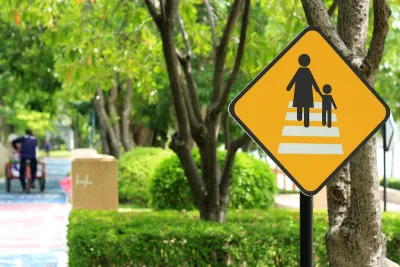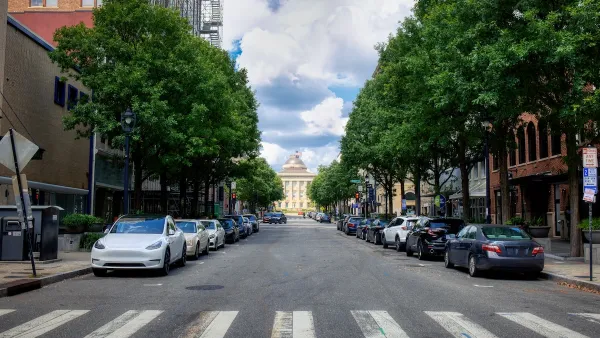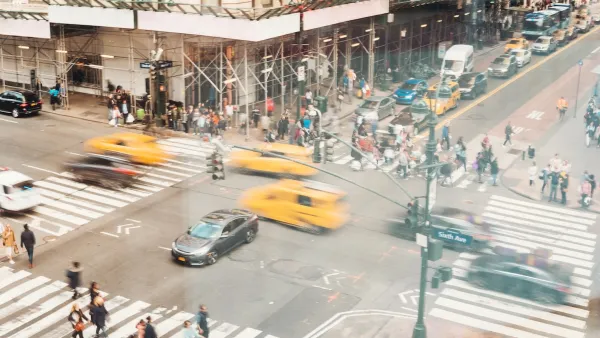Eliminating road deaths requires an overhaul of U.S. infrastructure and regulations to prioritize the safety of people in cars, on foot, and on bikes.

In an opinion piece for The New York Times, Jamelle Bouie outlines the challenges to stemming the mounting number of traffic deaths on U.S. roads, including the size of vehicles and the design of roads and infrastructure.
“It is difficult to overstate just how much the design of modern trucks and S.U.V.s threatens pedestrian safety,” Bouie writes. “In a 2020 study of pedestrian crashes in Michigan, the Insurance Institute for Highway Safety found that at residential and city speeds of 20 to 39 miles per hour, 30 percent of crashes with S.U.V.s resulted in pedestrian fatalities, compared with 23 percent for cars. At 40 miles per hour or higher, all crashes with the S.U.V. killed the pedestrians, while just over half the crashes with cars resulted in pedestrian fatalities.”
Meanwhile, the lack of safe pedestrian infrastructure on many streets puts pedestrians and cyclists at even higher risk. “Pedestrian infrastructure is often worst in places that are most disadvantaged. Compared with more affluent neighborhoods, these communities have fewer parks, sidewalks, marked crosswalks and other measures to calm traffic. They are also more likely to have wider roads and sparse streetscapes, which encourage speeding.”
For Bouie, “the path to drastically reducing pedestrian deaths is a steep one. It would require our cities to completely rethink their vehicle and pedestrian infrastructure, with an emphasis on reducing traffic speeds and redesigning streets to force drivers to slow down.” It also calls for improving public transit and multimodal infrastructure that offers people realistic, efficient, and affordable ways to get around without cars. “America’s City Councils, city planners and traffic engineers would, in short, have to prioritize safety over speed and the efficient movement of vehicles.”
FULL STORY: Opinion | The Path to Reducing Pedestrian Deaths Is Steep but Straight

Analysis: Cybertruck Fatality Rate Far Exceeds That of Ford Pinto
The Tesla Cybertruck was recalled seven times last year.

National Parks Layoffs Will Cause Communities to Lose Billions
Thousands of essential park workers were laid off this week, just before the busy spring break season.

Retro-silient?: America’s First “Eco-burb,” The Woodlands Turns 50
A master-planned community north of Houston offers lessons on green infrastructure and resilient design, but falls short of its founder’s lofty affordability and walkability goals.

Test News Post 1
This is a summary

Analysis: Cybertruck Fatality Rate Far Exceeds That of Ford Pinto
The Tesla Cybertruck was recalled seven times last year.

Test News Headline 46
Test for the image on the front page.
Urban Design for Planners 1: Software Tools
This six-course series explores essential urban design concepts using open source software and equips planners with the tools they need to participate fully in the urban design process.
Planning for Universal Design
Learn the tools for implementing Universal Design in planning regulations.
EMC Planning Group, Inc.
Planetizen
Planetizen
Mpact (formerly Rail~Volution)
Great Falls Development Authority, Inc.
HUDs Office of Policy Development and Research
NYU Wagner Graduate School of Public Service




























